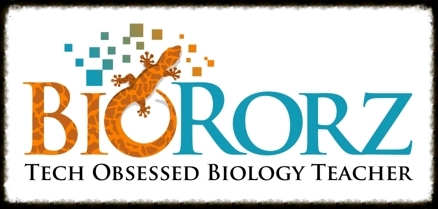Breaking Away From Content Delivery

The more I research and reflect on how we learn best, the more frustrated I get with programs that essentially require teachers to teach to some form of standardized test in order to ensure the success of students. Though I believe that IB biology provides a good platform for skill development in higher order thinking skills with lab design and analysis of data, I find the content to be too prescribed in terms of terminology and phrasing. As a result, a teacher could potentially get great results by simply teaching the test using only a program approved textbook or study guide for teaching resources. In addition to this, the time requirements for completing the "content delivery" in the higher level course, frequently prevent teachers from using more time-consuming, non-traditional methods such as project-based learning for much of the content.
Several months ago, I read a great post by Shawn Cornally from his blog "Think, Thank, Thunk". If you do not follow him, you should definitely add him to your list. In this post, he made me yearn for a teaching situation in IB biology where I could implement all of the cool strategies I get to use in my 10th grade integrated science class (not bound by a standardized test at the end of two years) such as project-based learning and gamification. The struggle he describes is one that I would love to tackle in my IB biology class. I wrote to him to ask how he could possibly do all of that in an AP/ IB class (talk about your super teacher). It turns out that his school doesn't have an AP or IB program for biology, though some elect to take the AP Biology exam after taking the course. I suppose the grass is always greener, but at the same time, I decided to make it my mission this year to find ways to move away from the test and challenge my IB students creatively forcing them to use those higher order thinking skills that we as a school have embraced this year: namely critical thinking, creativity, information fluency, and collaboration.
My last post is one example of how I have moved away from the lecture model in IB to teach content that is typically delivered old school style. Today I will explain how I taught cell transport processes using a new tool I discovered called Inklewriter.
It is almost a guarantee that my students will find a question similar to these on their exam in May of their senior year:
- Describe the process of mineral ion uptake into root.
- Explain how the structure of the villus in the small intestine is related to its function.
- Explain the process of active and passive transport that move materials across a membrane.
- Explain how a nerve impulse passes along a neuron.
- Explain the process of ultrafiltration.
What do all of these have in common? Cell membrane transport. As a result this is one of the most crucial themes for kids to not only understand but also be able to apply to a myriad of situations.
Inklewriter is an online "choose your own adventure" tool. Though you would typically find uses for this in an English class, I adapted it to address this theme in IB Biology. Since cell membrane transport is dependent on several variables such as concentration of molecules, size, polarity etc., it reads just like a choose your own adventure story. If this is the situation does it do this or this?
Prior to class, I had all students sign up for accounts and familiarize themselves with the instructions on how to create a choose your own adventure story. Then in class, I paired them up and let them run with it. The majority of them chose to use a metaphor such as a bouncer (cell membrane) at a party, or Middle Earth (still trying to process all of the weird references in this one). Others created their own fantasy or went the literal route.
Either way, the entire class was actively engaged in this activity, and I was able to identify any gaps in their understanding of transport by reading their stories. Since the majority of them also applied their knowledge of transport using a metaphor, they are more likely to remember how this works and be able to apply it to new situations when they learn about the different body processes or transport in plants. The best part was that we only had to spend one class period working on this. The engagement factor alone motivated my students to devote more time outside of class working on this than they would have if I had simply assigned a reading out of a text for them to memorize.
Here is a link to the assignment. You can find a more detailed description of this along with a PDF file under the IB Biology Lessons link on this blog.

